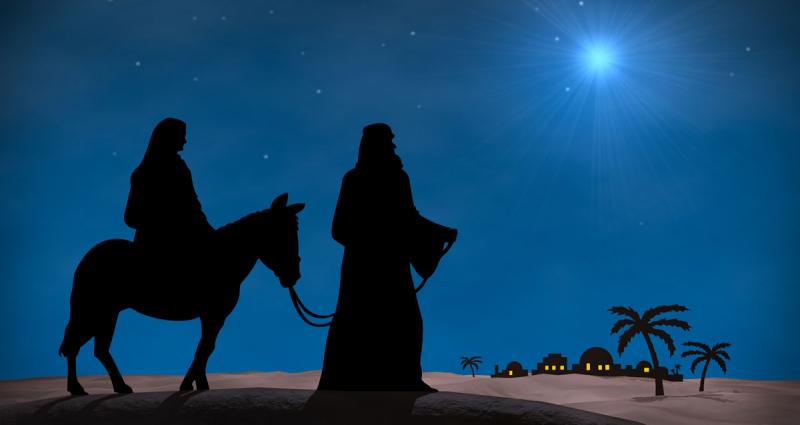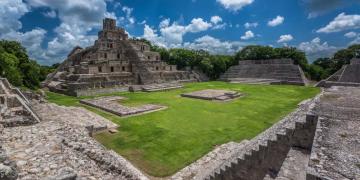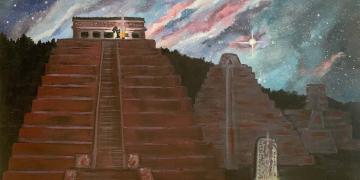You are here
Book of Mormon Central is in the process of migrating to our new Scripture Central website.
We ask for your patience during this transition. Over the coming weeks, all pages of bookofmormoncentral.org will be redirected to their corresponding page on scripturecentral.org, resulting in minimal disruption.
O Little Town of … Jerusalem?
The opening lines of “O Little Town of Bethlehem” romantically capture the image of a small, quiet town where something wondrous has just happened. Every year around Christmas, families across the world reenact the story of Joseph and Mary traveling the difficult journey to Bethlehem, only to find no room in the inn (see Luke 2). The wise men, too, are remembered for first going to Jerusalem only to learn that it is Bethlehem where the Christ child is actually to be found (see Matthew 2).
It seems the one thing everybody knows is that Jesus was born in Bethlehem. Yet Alma, speaking in ancient America less than 90 years before Christ would be born, prophesied that the Son of God would be “born of Mary, at Jerusalem, which is the land of our forefathers” (Alma 7:10). Was Alma somehow mistaken? How did Alma get this wrong when even primary children today know the correct answer?
Our latest KnoWhy discusses archaeological evidence, brought to light well after the publication of the Book of Mormon, that helps us answer these questions. Three key pieces of evidence show that Alma’s statement was accurate, from an ancient perspective.
1. The Dead Sea Scrolls

The first piece of evidence is from the Dead Sea Scrolls. In a story about the prophet Jeremiah, a fragment mentions captives “from the land of Jerusalem” being carried away to Babylon. The story was probably written in the first century BC, but the setting for the story is around the same time Lehi left Jerusalem. A pair of Dead Sea Scrolls scholars said this phrase “greatly enhances the sense of historicity” of the narrative, since in Jeremiah’s time, Judah “consisted of little more than Jerusalem and its immediate environs.”
Nephi also uses the phrase “land of Jerusalem” (see 1 Nephi 2:11; 3:9–10; 5:6, etc.). Since he lived during the same time-period as Jeremiah, this evidence must “greatly enhance the sense of historicity” of his record as well. But what does all of this have to do with Alma?
Notice again what Alma says about where the Savior would be born: “at Jerusalem, which is the land of our forefathers” (Alma 7:10, emphasis added). Alma was not referring to the city, but the land Jerusalem, which included not just the city, but also the “immediate environs.” Did that include Bethlehem? Additional evidence from archaeology suggests that it did.
2. The Amarna Letters

A collection of letters found in Amarna, Egypt provide additional evidence that during at least some periods of ancient history, there was not just a city, but a “land of Jerusalem.” Known as the Amarna Letters, these were written in the 14th century BC, and some of them mention the “land of Jerusalem” several times. And on one occasion, the letters even mention another town within the borders of the “land of Jerusalem,” called “Bit-Lahmi,” as translated by some scholars. If that translation is correct, then it’s “an almost certain reference to the town of Bethlehem,” according to the late W. F. Albright.
While these letters are from several hundred years before Lehi’s lifetime, they do provide archaeological evidence that Bethlehem was considered part of the “land of Jerusalem,” at least at some points in ancient history. Is there evidence that this was the case in Lehi’s lifetime? Yes, there is.
3. The Bethlehem Bulla

In 2012, archaeologists found a seal impression (called a “bulla”) with the name “Bethlehem” on it, and dated it to around the seventh century BC (the same time-period when Lehi lived). But the bulla wasn’t found in Bethlehem—it was found in Jerusalem. According to archaeologists, this was because the seal was attached to goods shipped from Bethlehem to Jerusalem under one of Judah’s seventh century BC kings, most likely Josiah or Manassah, or perhaps Hezekiah.
In the seventh century BC, according to Nadav Na’aman, “Jerusalem was located in the centre of a sort of district, which encompassed the capital and its periphery, including the agricultural areas of the city’s residents, as well as satellite settlements directly connected to Jerusalem proper.” Scholars sometimes refer to this region as “Jerusalem’s hinterland”—or other words, the “land of Jerusalem.”
These “satellite settlements” in the surrounding area would ship their surplus goods to Jerusalem. So the Bethlehem Bulla, found in Jerusalem, is archaeological evidence that Bethlehem was one of the satellite settlements in the “land of Jerusalem,” shipping it’s surplus goods back to the capital city.
Thus, Bethlehem would have been part of “Jerusalem, … the land of [Alma’s] forefathers” Lehi and Nephi, in the seventh century BC.
Conclusion
The quiet charm of the little town of Bethlehem will no doubt continue to capture your hearts and imaginations each Christmas, as it will mine, while visualizing the Savior’s humble birth. But this Christmas, you may want to remember that that little town was part of the larger “land of Jerusalem” as you reflect on Alma’s powerful and—from an ancient perspective—accurate prophecy of the Savior’s birth, along with other Book of Mormon prophecies pertaining to Christ’s nativity (see 1 Nephi 11:8–23; Mosiah 3:5–8; Helaman 14:2–7; 3 Nephi 1).
Merry Christmas!
For more information, including sources for the details of this post, see our recent KnoWhy and its recommended “Further Reading.
Subscribe
Get the latest updates on Book of Mormon topics and research for free








